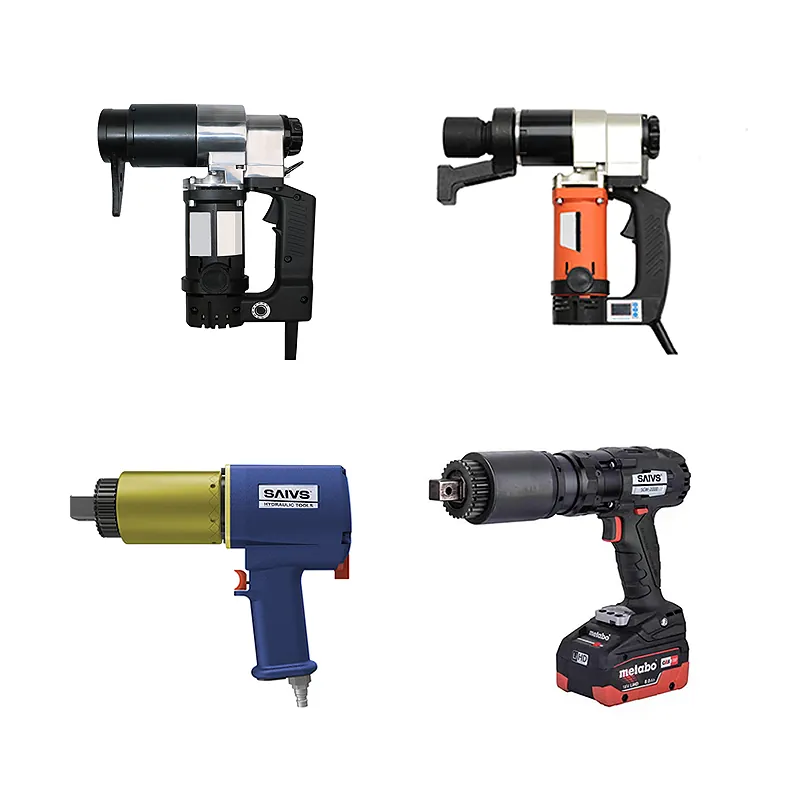Identifying Problems With Electric And Pneumatic Torque Tools
Electric and pneumatic Torque Tools are essential for any assembly operation.
A tool that isn't outputting the correct amount of torque is a security risk.
That's why it's important to resolve torque tool issues as quickly as possible.
Causes of Common Issues With Electric Torque Tools
Clutch Failure (Electric Screwdrivers):
An electric screwdriver's clutch is responsible for regulating the torque applied to fasteners.
A properly functioning clutch will prevent overdrilling by disengaging the drive when the
desired torque is reached. However, several factors can cause clutch failure.
These include an unstable torque output, an incorrectly installed bit, the use of a low-quality bit,
or a broken output shaft. When any of these issues occur, the clutch may fail to disengage properly,
leading to overdrilling or other operational failures.
Doesn't Display Error Codes (Electric Nutrunners):
Many electric nutrunners are equipped with error code displays
that provide information about operational failures.
These error codes help users identify the specific issues the nutrunner is experiencing.
The descriptions of error codes can typically be found in the manufacturer's manuals,
as they vary depending on the manufacturer and nutrunner model. Common error codes may
indicate overheating or exceeding the torque rate limits of the tool.
If an electric nutrunner doesn't display error codes, troubleshooting and
diagnosing operational failures may be more challenging.
Odd Noises or Odors (Electric torque wrenches):
Another common issue with electric Torque Wrenches is the occurrence
of odd noises or odors during operation. Vibrational sounds can be produced by
low-quality or loose bearings in the gearbox of an electronic torque wrench.
These noises indicate potential issues with the internal components of the tool.
Additionally, burning smells emitted by electronic torque wrenches are often an
indication of a motor malfunction or failure. If an Electric Torque Wrench produces
unusual sounds or emits a scorching smell, it is important to immediately turn off
the tool and seek professional assistance to diagnose and address the problem.
Common Issues With Pneumatic Torque Tools & Their Causes
Slowing or Stalling Under Certain Loads:
Pneumatic torque tools, like any other tools, require regular calibration and maintenance
to ensure optimal performance. Failing to maintain and calibrate the torque tool can
result in slowing or stalling under certain loads. Regular lubrication is crucial
for pneumatic torque tools, especially when they are subjected to heavier loads.
Frequent lubrication, preferably at least once a day for frequently used tools,
helps reduce friction and ensures smooth operation.
Displaying Incorrect Pressure:
Insufficient pressure in pneumatic torque tools can be caused by various factors.
Worn gaskets or seals, excess moisture inside the tool, and a damaged regulator
are common culprits. Excessive moisture can lead to rapid damage to gaskets and seals,
compromising the tool's performance. To mitigate this, it is important to lubricate
the tools regularly with manufacturer-approved oil or grease.
Proper lubrication reduces friction and helps prevent water contamination,
ensuring consistent pressure and optimal tool functioning.
Are you experiencing issues with your electric or pneumatic torque tool?
If you are looking for factory manufacturers and suppliers of
(Electric or Pneumatic Torque Wrench),choose SAIVS TOOL because of the high quality,
variety of choices, low price and fast delivery.You can easily find the best solution here!
Why Choose SAIVS™ as Your Supplier?
With 20 years of industry experience, SAIVS is a leading Chinese manufacturer of high-quality tools, offering competitive pricing and excellent customer service.We pride ourselves on exceptional quality control, extensive experience, and comprehensive after-sales service.
